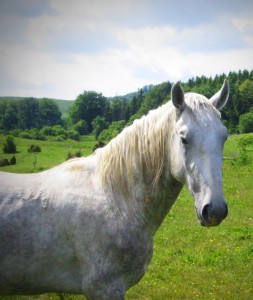Dear horseowners, horseprofessionals and friends of horses
With tragic frequency we all learn from the media  about cases in which unauthorised persons entered pastures or stables with the intent to injure or even kill the animals, often horses, there. We as zoophiles cannot stress enough how much we resent such actions. Scientific evaluations and criminological findings identified a wide variety of motivations for these actions, ranging from pure sadism, hatred on women, sexual motivations to dares and rituals.
about cases in which unauthorised persons entered pastures or stables with the intent to injure or even kill the animals, often horses, there. We as zoophiles cannot stress enough how much we resent such actions. Scientific evaluations and criminological findings identified a wide variety of motivations for these actions, ranging from pure sadism, hatred on women, sexual motivations to dares and rituals.
In virtually all cases there is admittely a trespass component. On the other hand fortunately only a fraction of the total trespassings cause damage at all. And we argue it is a difference whether a romantic youth in his insecure years is yearning for closeness and warmth, whether a drunk gang decided to see some animal blood, or whether a sadist is looking for his sexual climax, only possible through torture and killing of an animal.
You as the animalowner are understandably interested in restricting absolutely every unsupervised access, especially at night, by unknown persons to your animals.
Although there can never be perfect security a lot can be done to minimize the risk for your horse:
Always consider your own safety first!
- write down the license plates of unfamiliar vehicles close to your pastures
- call police when you suspect intruders (assume the perpetrator is armed!)
- take pictures to discourage (also to secure evidence!)
- should you decide to confront an intruder don’t forget it could actually be multiple persons
- never approach intruders alone – whenever possible, act in numbers; secure help from others will arrive before you go out
Feeding:
- keep varying the times when you feed and are around
- make a habit to feed in the middle of the field; Your animals shall not be accidentally conditioned to expect food from people at the fences
Raise awareness:
- befriend and talk to neighbours, locals, the local hunting or forrest offical etc. to have an eye on your horses and report odd happenings or strangers immediately
- hand out your telephone number(s) with instructions for emergencies to these supporters
Natural defences:
- choose pastures which are fully visible and nearby houses
- thorns and bushes at the field border are a natural barrier
- pastures which border on rivers have less ‘exposed’ fenceline
- a free-roaming guard dog in the stable or ranch increases security significantly
- possible pasture buddies who are naturally on guard and raise alert are geese, sheep or goats
Cheap defences:
- visible signs indicating video surveillance are a deterrent; even if no real surveillance is installed – these signs can be cheaply made at workshops
- in a similar manner, a highly visible ‘dummy’ cameraacts as discouraging element
- an electric fence with at least 3 lines, not more than 40 cm from each other, provides an impediment (the flat variety is better than the chord fences)
- lock all stable entries
Sophisticated defences
- highly visible working surveillance cameras, installed out of reach on the pasture or in the stable
- floodlight with motion sensitive sensors at the entryways; these can be hooked to the mains in the stable or batteries in the pasture
- install metal-guards at the stable windowsr
- install alarm systems In order to avoid a panic among the horses silent varieties can be installed
In case of strong suspicion:
- sleep in the stable
- turn in the horses before nightfall
- organise excellent lighting for the stables and the immediate surroundings
- already inform authorities about your suspicion, especially the police and talk to them about possible measures to be taken

Please note: The linked products act as examples. There is neither a connection between these manufacturers and our association, nor do we specifically endorse these models.
